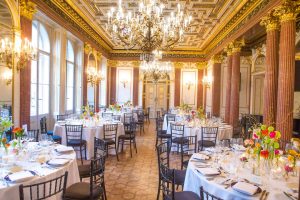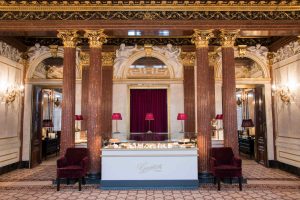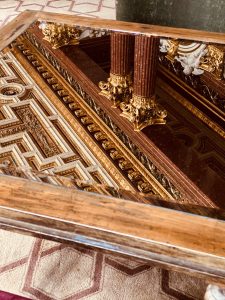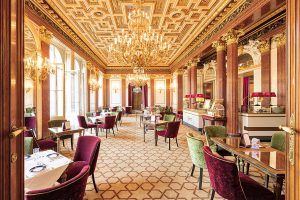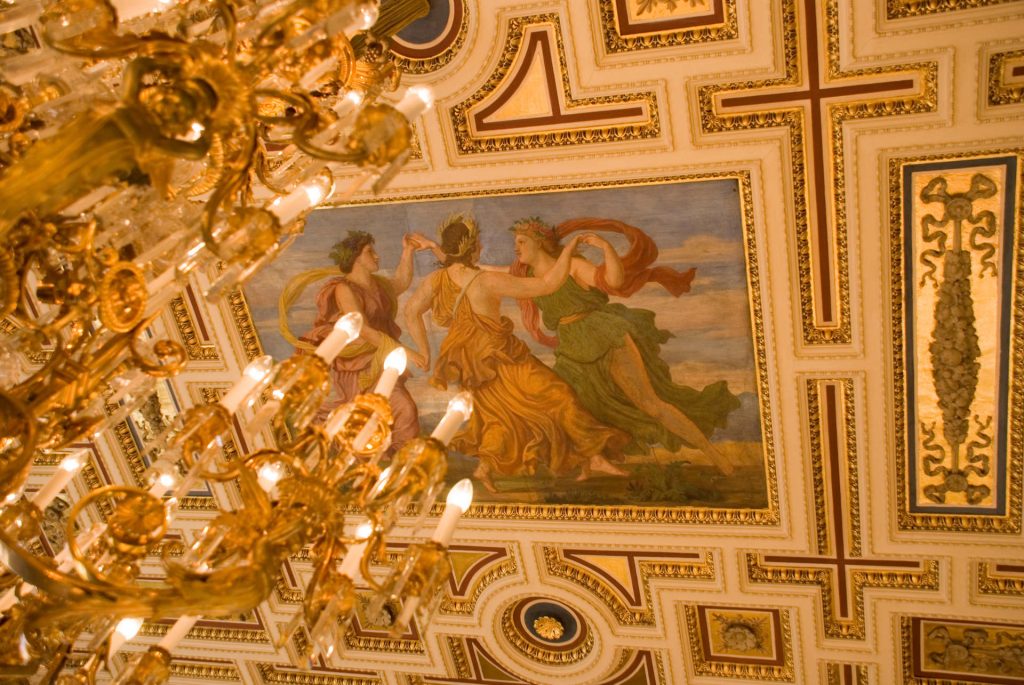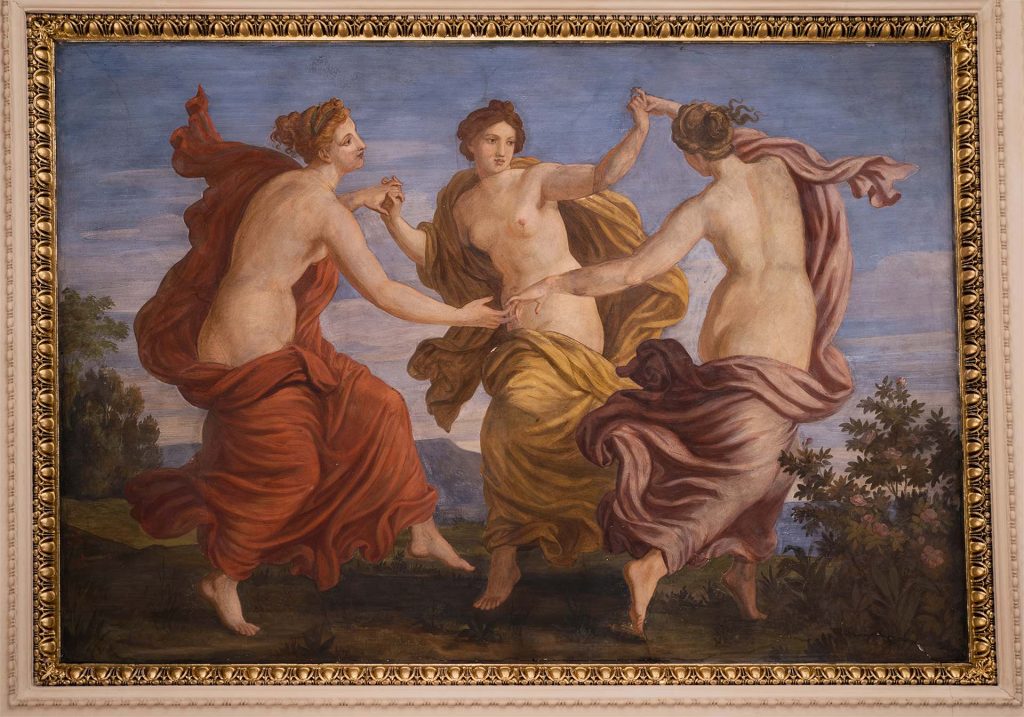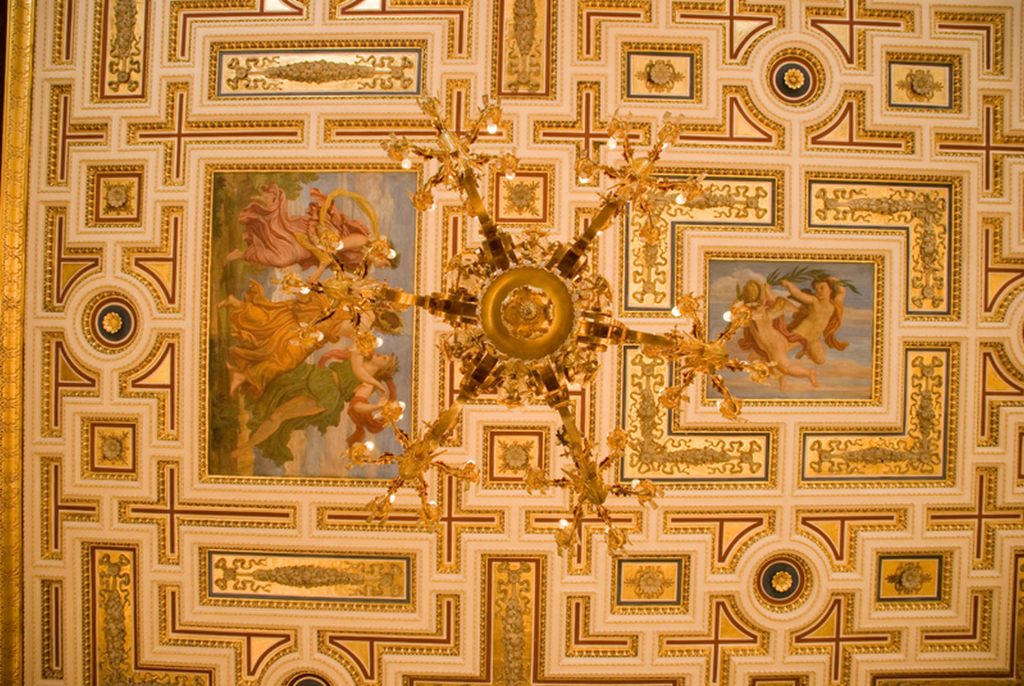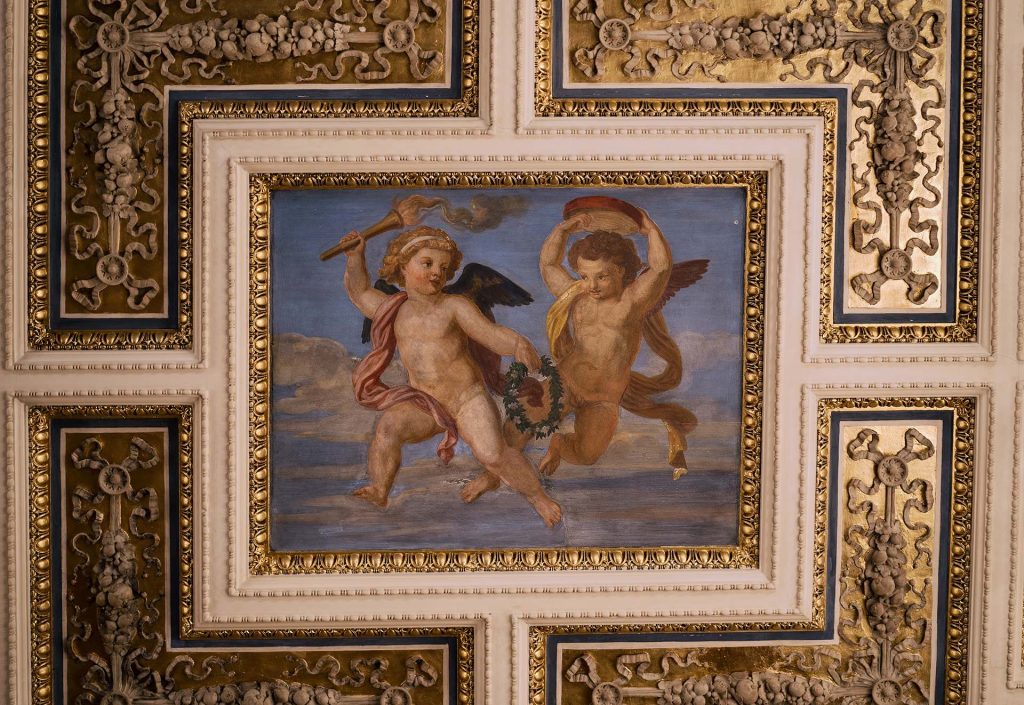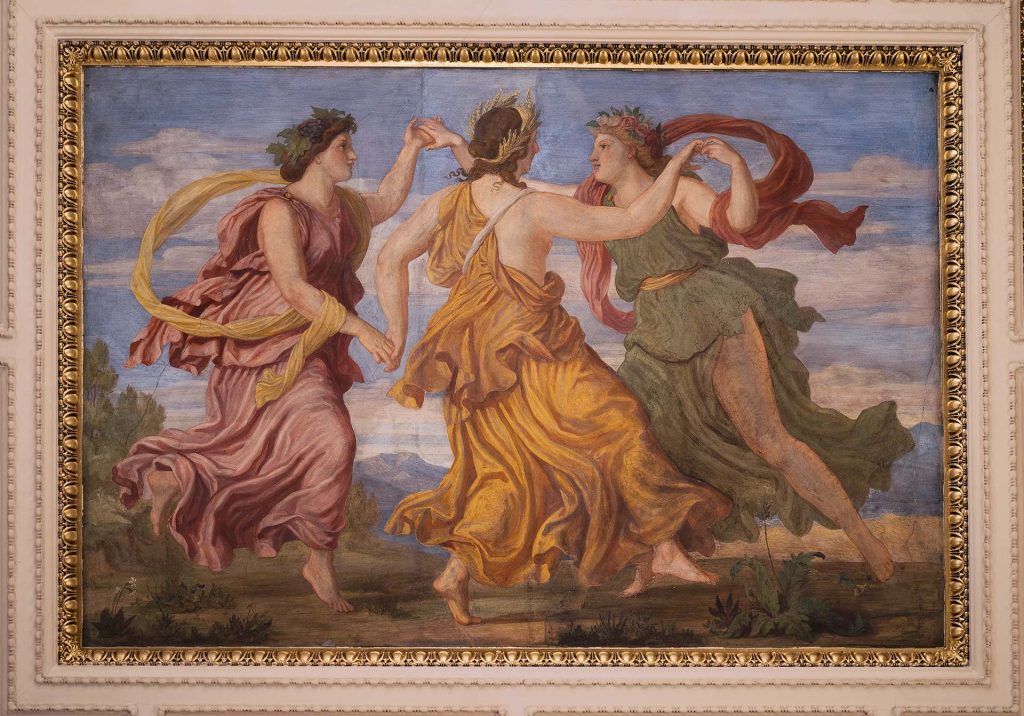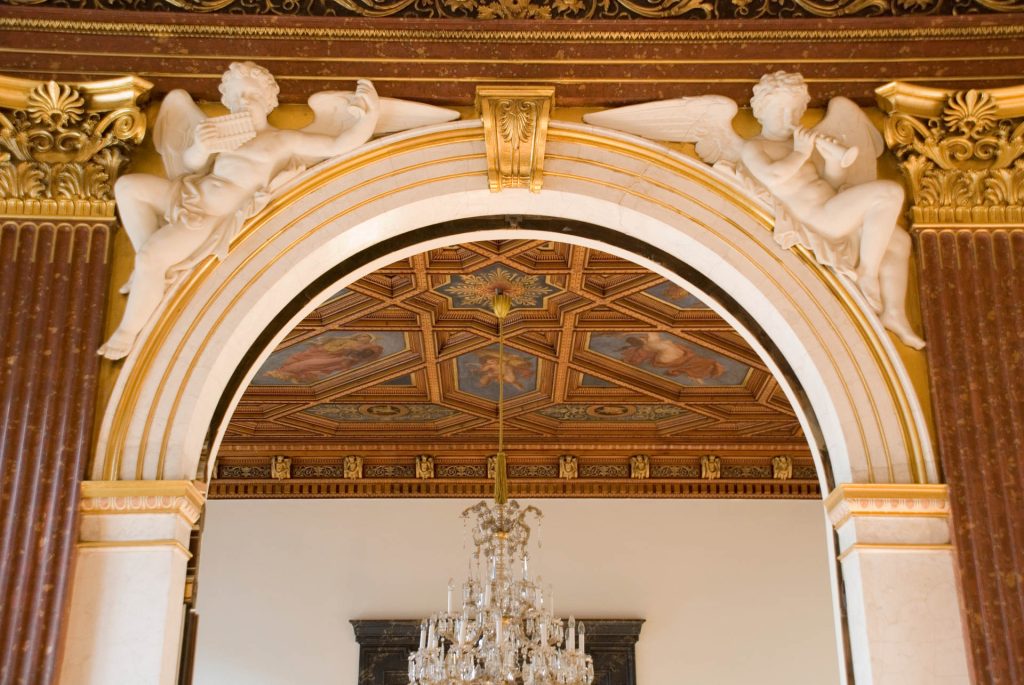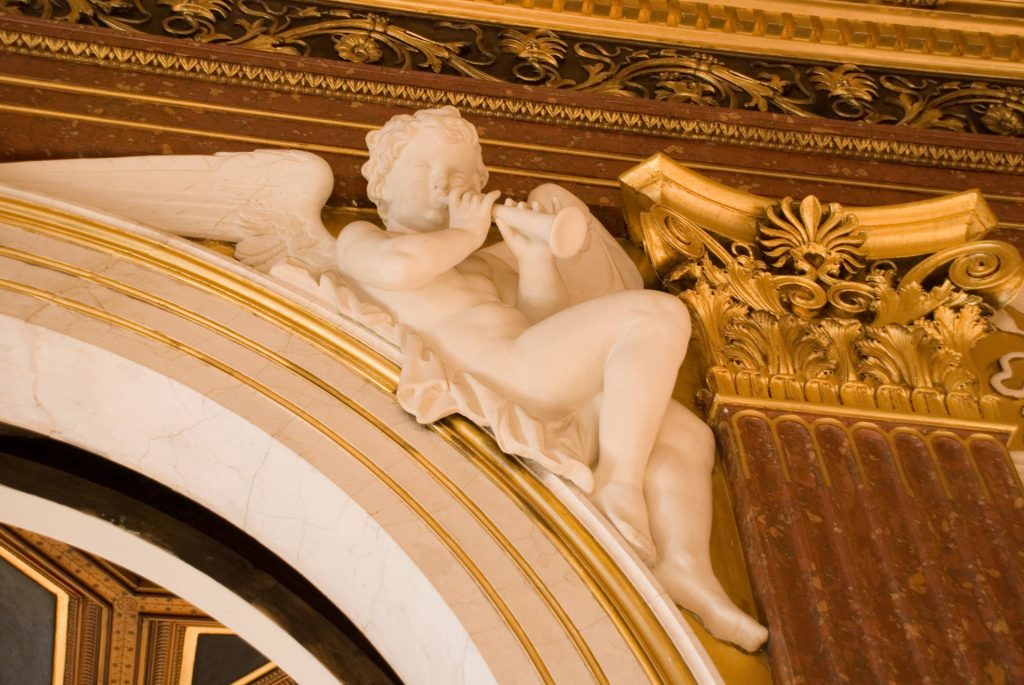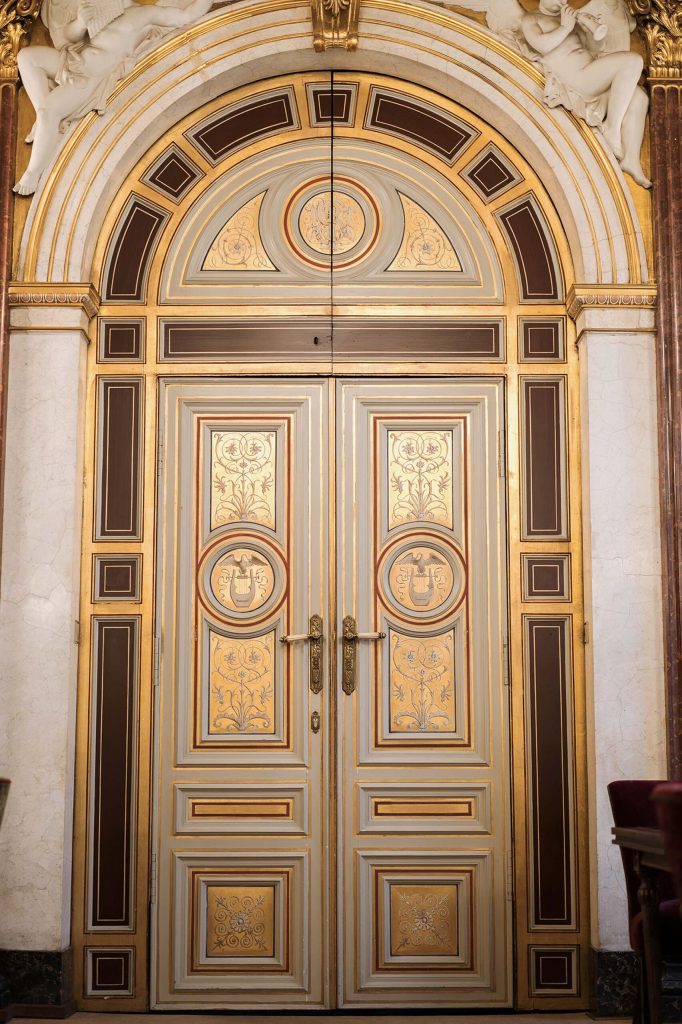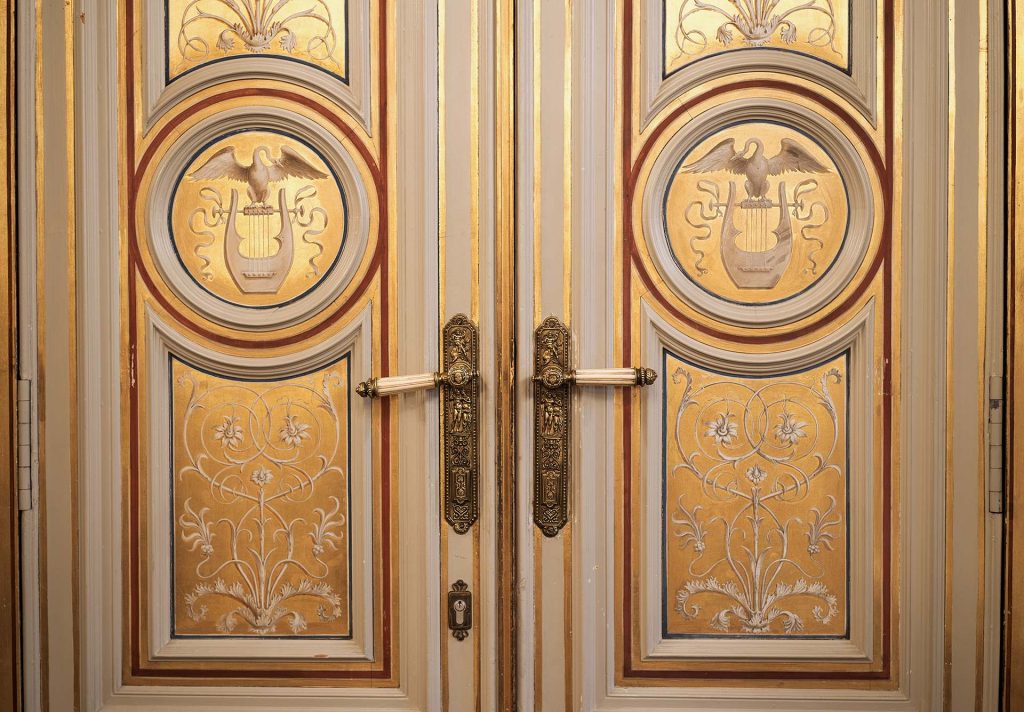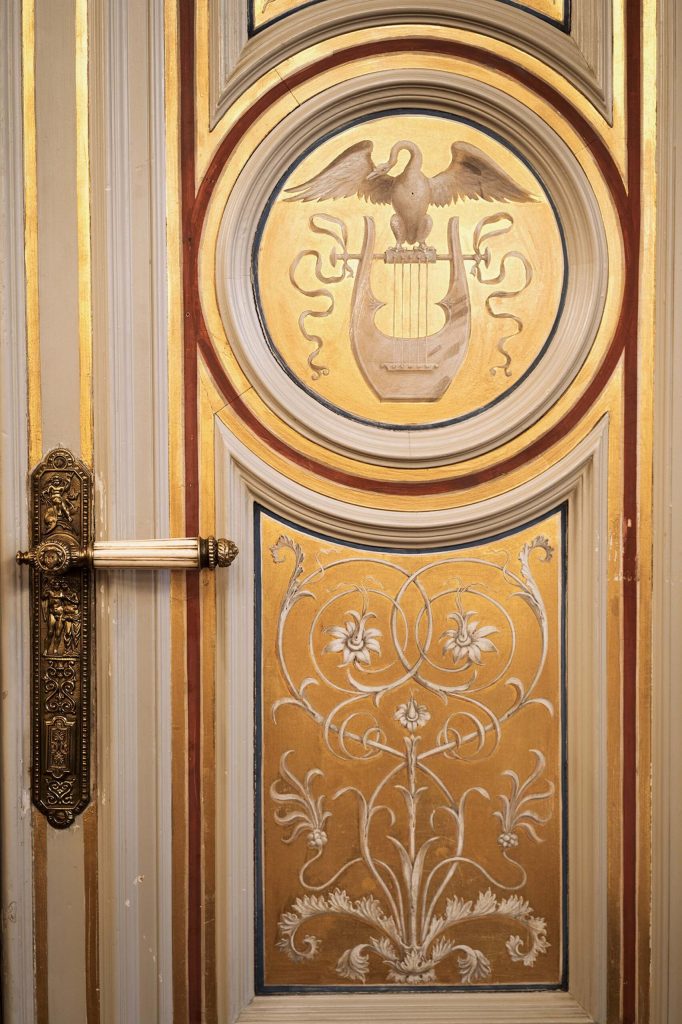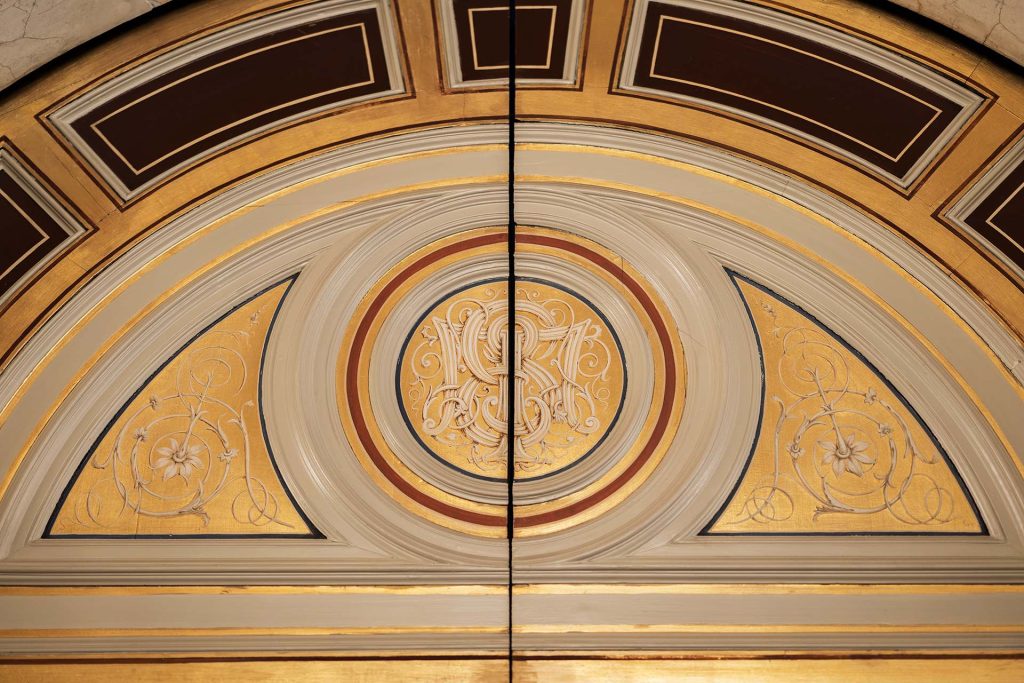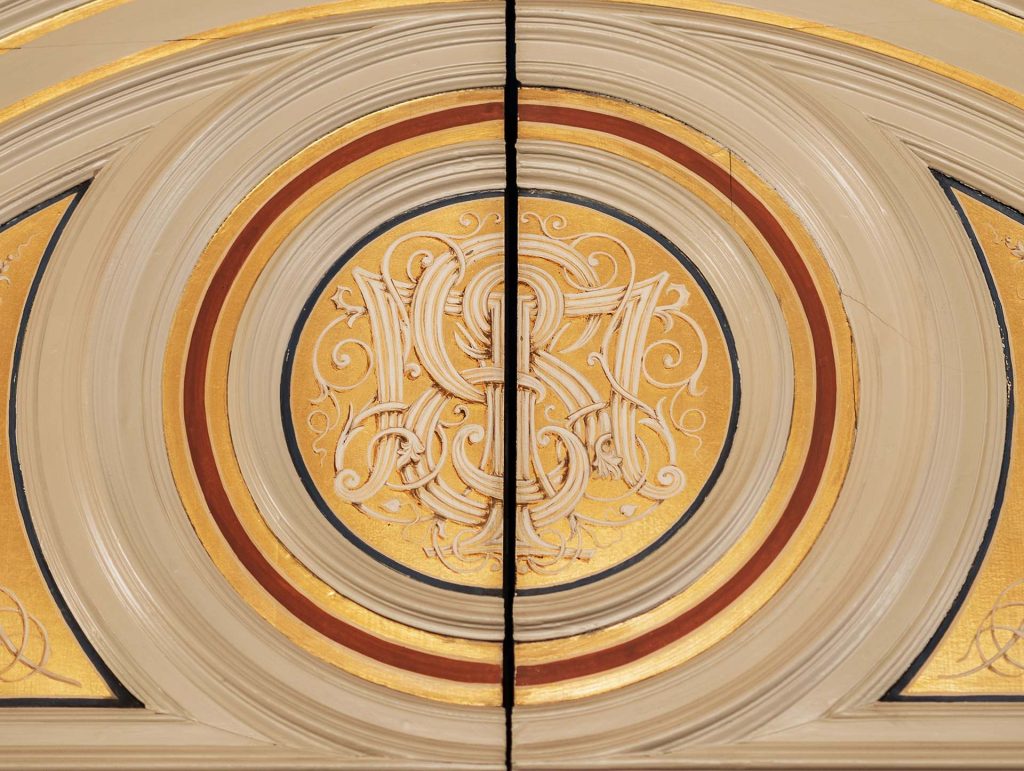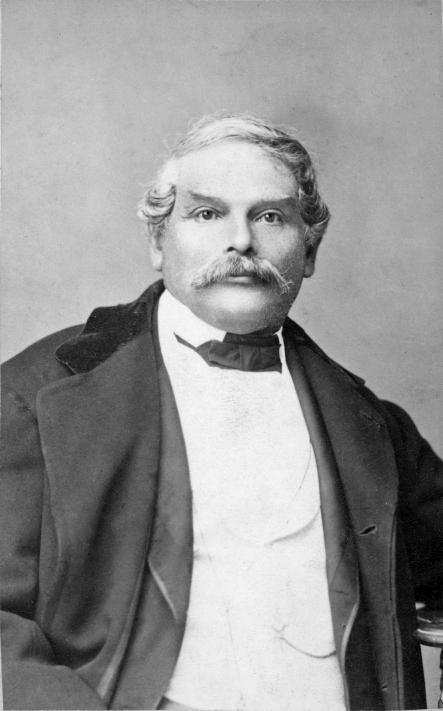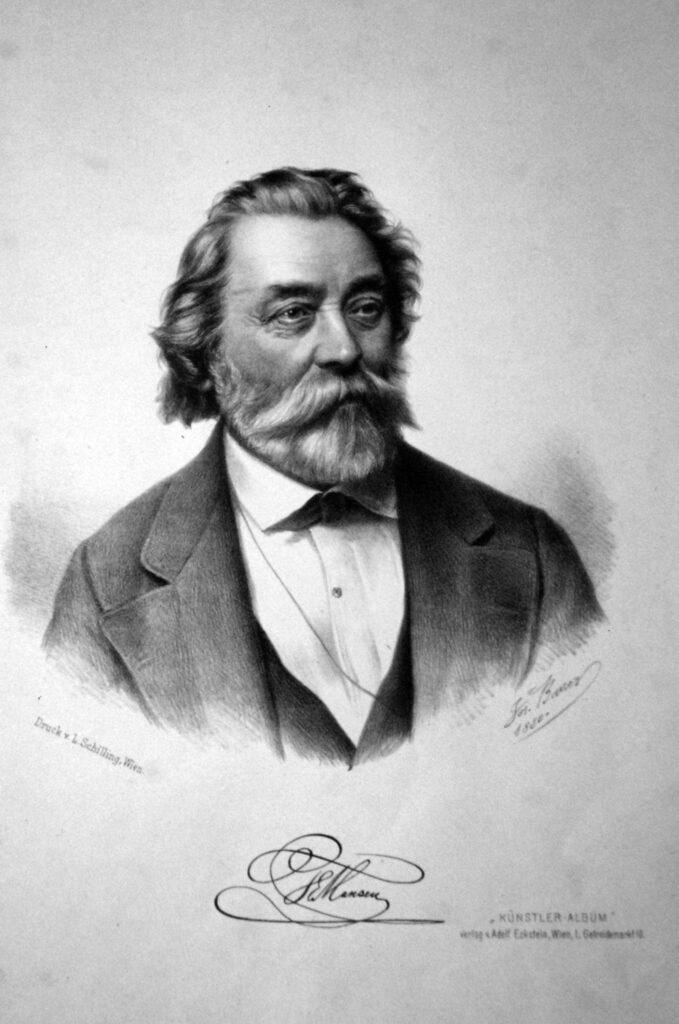Festsaal
It is the magnificent centerpiece of the Gerstner Salons Privés. Equipped with marble columns and a gold-decorated wooden coffered ceiling, the ballroom is perfect for festive receptions or gala dinners.
Home » Ballroom
Festsaal
The dance hall of the Todescos
The ballroom is a rectangular hall facing Kärntner Straße, designed with dark red pilasters and light walls. Hansen’s design creates vertical emphasis in the room. The walls are decorated with stucco marble and Stuccolustro, a technique widely used in the Historicist period. The main colors are reddish-brown, gold, black, and ivory.
The ceiling features rich decoration with coffering and subtle gilding. Four mythological scenes, painted by Christian Griepenkerl based on Carl Rahl’s designs, adorn the ceiling, depicting the Horae, Graces, and Eros and Anteros.
The large gold doors can slide into the walls, opening the room to adjacent spaces. Above the doors are angels playing musical instruments, symbolizing the room’s function as a venue for events.
Near the cake display: Hansen added a narrow annex separated by double columns, which served as an orchestra stage in the 19th century. Today, it houses displays of delicacies from Gerstner K.u.K. Hofzuckerbäcker.
